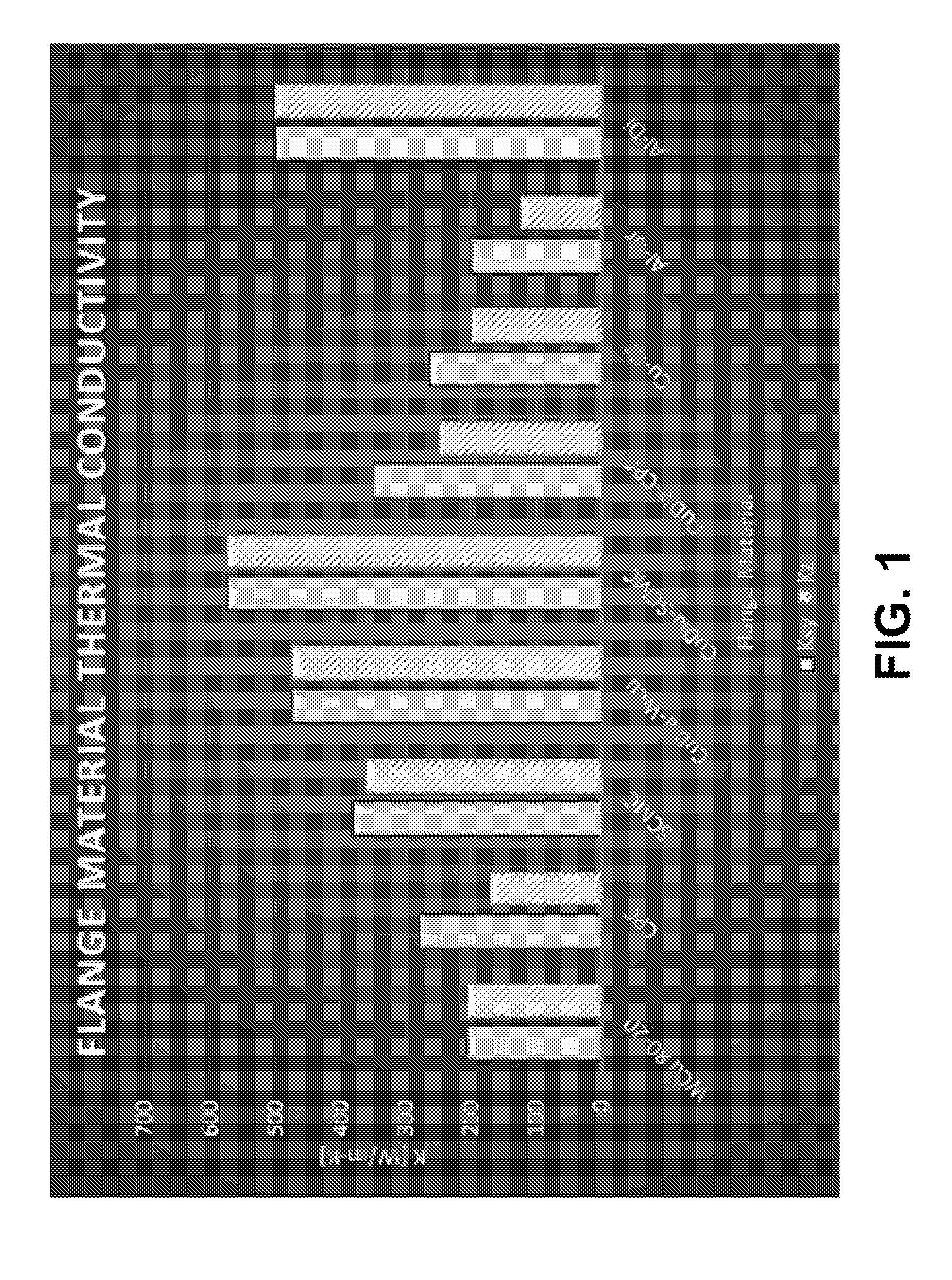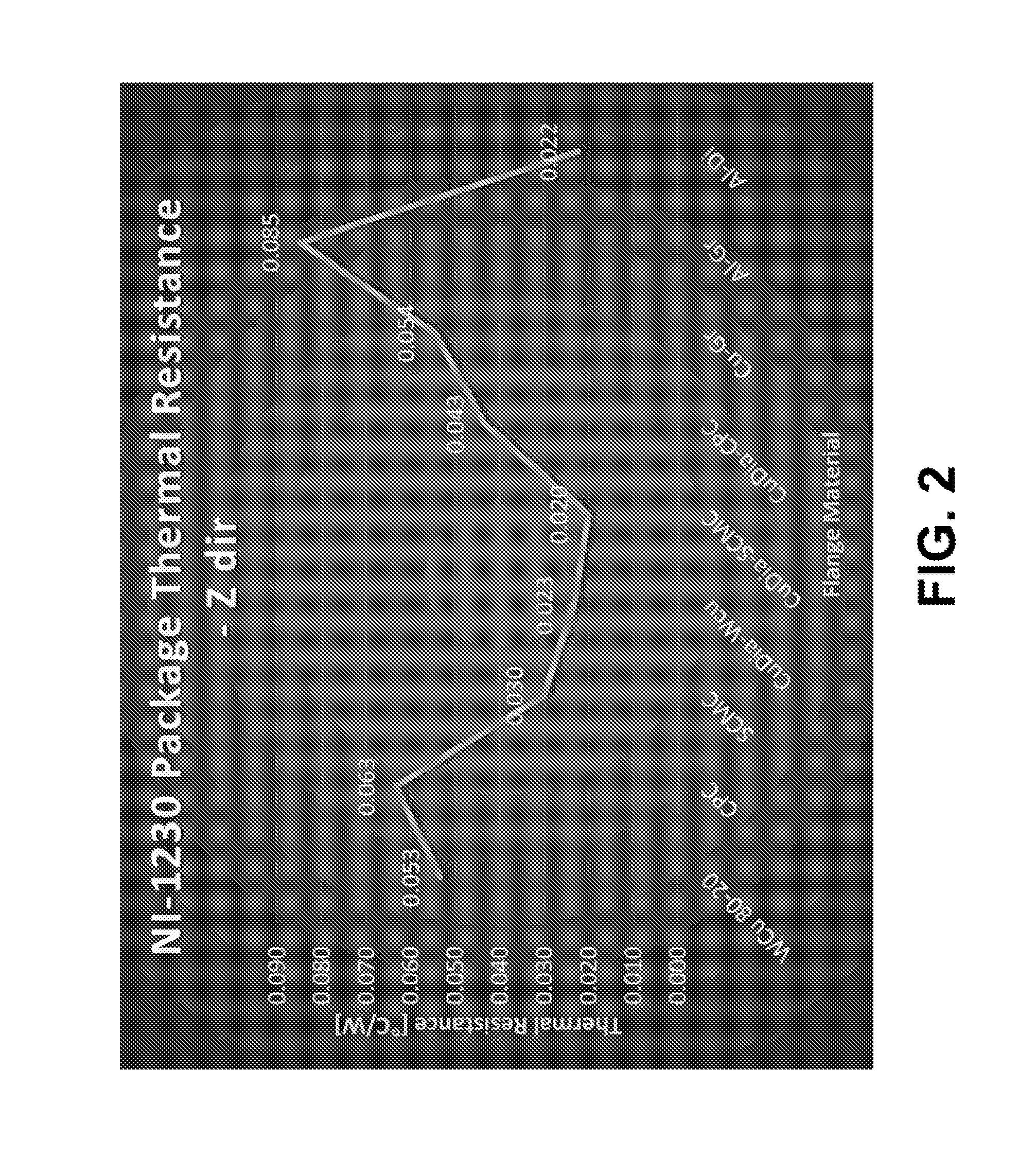Composite Structure of Tungsten Copper and Molybdenum Copper with Embedded Diamond for Higher Thermal Conductivity
a technology of molybdenum copper and molybdenum copper, which is applied in the field of packaging semiconductor devices, can solve the problems of reducing the life of the die/device, poor reliability, and generating substantial heat in the semiconductor and laser die, so as to increase the power gain, and increase the overall physical size of the system
- Summary
- Abstract
- Description
- Claims
- Application Information
AI Technical Summary
Benefits of technology
Problems solved by technology
Method used
Image
Examples
Embodiment Construction
[0018]The following steps outline one embodiment of a method to manufacture a composite structure that will provide high thermal conductivity in the X and Y plane of the layers, as well as through plane (Z-axis).
[0019]The first step is to press and first pass sinter a tungsten or molybdenum preform 20 of known porosity, and to machine, such as by milling, drilling, grinding or, punching a through cavity in the preform 20. The preform 20 is preferably a rectangular solid, with a rectangular cavity, thus comprising a “window frame” configuration. Then, the preform 20 is etched with a suitable etchant to achieve the desired surface porosity.
[0020]The second step is to embed a unitary insert of porous synthetic [or natural] isotropic diamond material 18 into the cavity, making sure that the upper surface of the diamond material is slightly lower than the top height of the cavity, thus forming a gap 22. The gap in the surface of the diamond material is preferably 0.002 to 0.004 inches be...
PUM
| Property | Measurement | Unit |
|---|---|---|
| melting temperature | aaaaa | aaaaa |
| length | aaaaa | aaaaa |
| heat | aaaaa | aaaaa |
Abstract
Description
Claims
Application Information
 Login to View More
Login to View More - R&D
- Intellectual Property
- Life Sciences
- Materials
- Tech Scout
- Unparalleled Data Quality
- Higher Quality Content
- 60% Fewer Hallucinations
Browse by: Latest US Patents, China's latest patents, Technical Efficacy Thesaurus, Application Domain, Technology Topic, Popular Technical Reports.
© 2025 PatSnap. All rights reserved.Legal|Privacy policy|Modern Slavery Act Transparency Statement|Sitemap|About US| Contact US: help@patsnap.com



